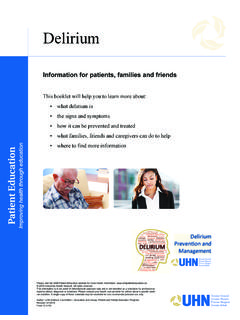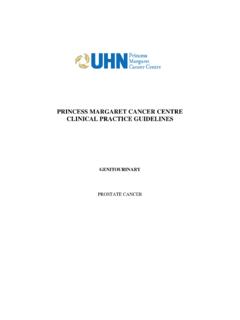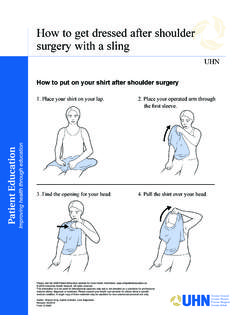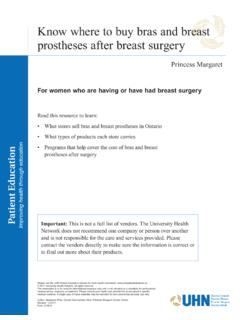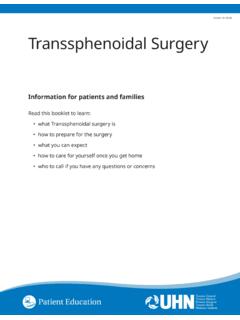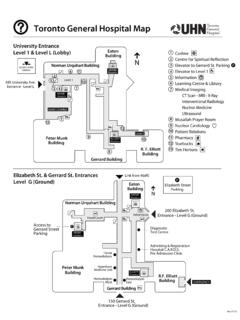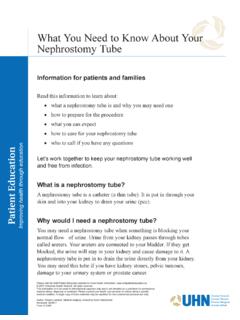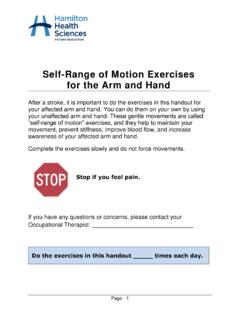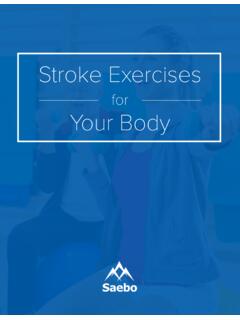Transcription of Exercises for Thoracic Outlet Syndrome
1 Exercises for Thoracic Outlet SyndromeFor patients who have been diagnosed with Thoracic Outlet SyndromeRead this brochure to learn more about: Thoracic Outlet Syndrome treatment options Exercises you can do where to learn moreForm: D-#50202 What is Thoracic Outlet Syndrome ? Thoracic Outlet Syndrome (called TOS in this pamphlet) is a common but challenging condition that affects the front of the shoulder and neck area, just below the V where they picture below shows this scaleneMiddle scalenePosterior scaleneBrachial plexusClavicleFirst ribSubclavian arterySubclavian veinSubclavius muscle3 There are 3 different types of TOS that cause similar of TOSC ausesWhat to doNeurological TOSS queezing together of nerves that affects the neck and down the See pages 6 and your posture. See page or functional TOSBad posture causes changes in the muscles that affect the nerves and blood See pages 6 and your posture.
2 See page TOS *This is the rarest form of TOS, but also the most together of the artery or vein under the collar make the arm or hand feel cold, pale and be painful and look spotted or See pages 6 and your posture. See page may need surgery if vascular TOS is not is the treatment?The Exercises on pages 5 and 6 help to treat TOS and focus on: decreasing symptoms improving posture returning to more normal functionHow do I prepare for my treatment?Before you begin your Exercises :1. Warm your muscles before stretching. Heat the neck and shoulder area with a warm shower or heating pad set to LOW for about 10 to 15 minutes or until you feel warm. You should NEVER feel hot, as this may lead to a Stretch gently. You should feel a pull in your muscles, but not pain. If stretching becomes painful, try to not go so far into the Hold your stretches.
3 Avoid bouncing when you Pay attention to how you feel. If your hand starts to feel cold, numb or begins to tingle, stop to correct your postureTry to sit tall when you are sitting or standing. Slouching causes the shoulders and neck to roll forward, and can tighten the muscles in your neck and your doctor first before you start any new exercise Neck stretchLook straight your right ear to your right shoulder, without looking down or looking your physiotherapist says it is OK, turn your chin down or up. Hold for 20 to 30 seconds. Repeat times, times a Shoulder stretch (3 positions)Start with your elbows or arms low or with your arms straight by your side. Lean your body weight forward until you feel a stretch in the front part of the shoulder or chest.
4 Hold for 20 to 30 seconds. Repeat times, times a Shoulder blade squeezeSqueeze your shoulder blades times, times a this exercise becomes easier, you can increase the number of example: Do 1 set of 10, 2 sets of 10, and 3 sets of 10. Your physiotherapist can Exercises are only a start. Find a physiotherapist that you can work with to help to learn moreFind reliable websites with information about TOS here:National Institute for Neurological Disorders and Stroke: Website: Clinic: Website: Clinic: Website: Peter and Melaine Munk Patient & Family Learning Centre and Library Visit the TGH Peter and Melaine Munk Patient & Family LearningCentre and Library for more reliable health informationIn person: Norman Urquhart Building 1st Floor Website: to find usDivision of Vascular SurgeryToronto General HospitalEaton Building 6th Floor200 Elizabeth Street Toronto, ON M5G 2C4 Have feedback about this document?
5 Please fill out our survey. Use this link: for more health information. Contact to request this brochure in a different format, such as large print or electronic formats. 2020 University Health Network. All rights reserved. Use this material for your information only. It does not replace advice from your doctor or other health care professional. Do not use this information for diagnosis or treatment. Ask your health care provider for advice about a specific medical condition. You may print 1 copy of this brochure for non-commercial and personal use : D-5020 | Author: Naomi Eisenberg | Reviewed: 07/2020
